All those migratory waterfowl that show up every year get all the press, probably because there are so many of them, and it is spectacular to see thousands of ducks, geese, American pelicans, and more covering the waters. But the truth is, as wonderful and marvelous as that is, the songbirds that are so much a part of everyday life of the Outer Banks may be even more miraculous. If nothing else, there are probably even more of them than there are migratory waterfowl.
This is just barely a minuscule snippet of all the birds that are part of the Outer Banks, and there is not one perfect place to go and see all of them. Our maritime forests are a good place to start, but almost all the songbirds of the Outer Banks are just about everywhere.
Blue Jay
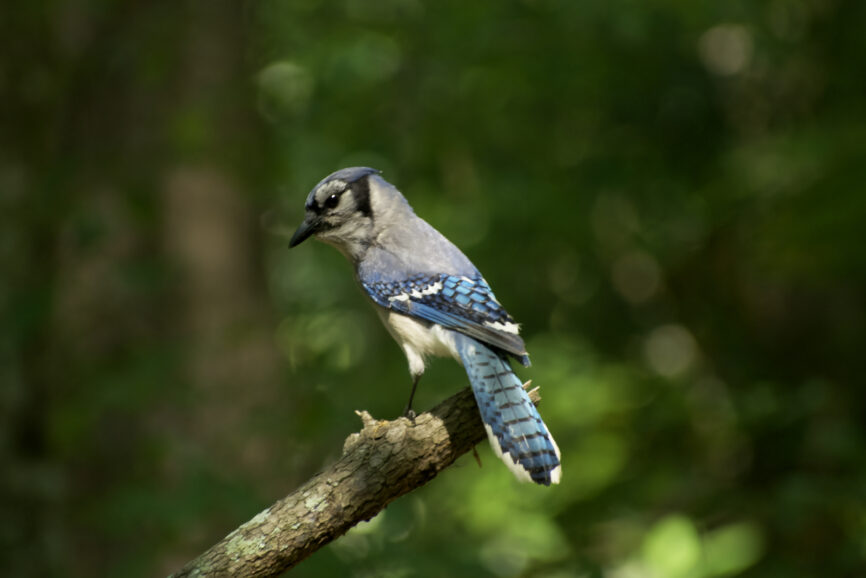
They’re considered a songbird, although there could be a real debate about whether or not the raucous cry of a Blue Jay is song-like. We’re probably being a little unfair to the bird—the reality is they are capable of a number of much more pleasant sounds and can mimic quite a few other birds…including, evidently, the scream of a Red-shouldered Hawk.
Known for their intelligence—they are a member of the crow family, after all—blue jays won’t pass up a free meal at a tray feeder, but their natural habitat tends toward hardwood trees and heavier foliage. This picture was taken in Kitty Hawk Woods. With its mixed evergreen and hardwood trees, that is considered ideal for the blue jays.
The stories of blue jays stealing shiny objects certainly seem to be true—they decorate their nests with the loot they gather. There doesn’t seem to be any other reason for taking all those pretty objects back to the nest. The final touch in nest decorations are the glistening keys, occasional coins, and whatever else can be found. If none are available, the nest isn’t decorated.
Brown Thrasher
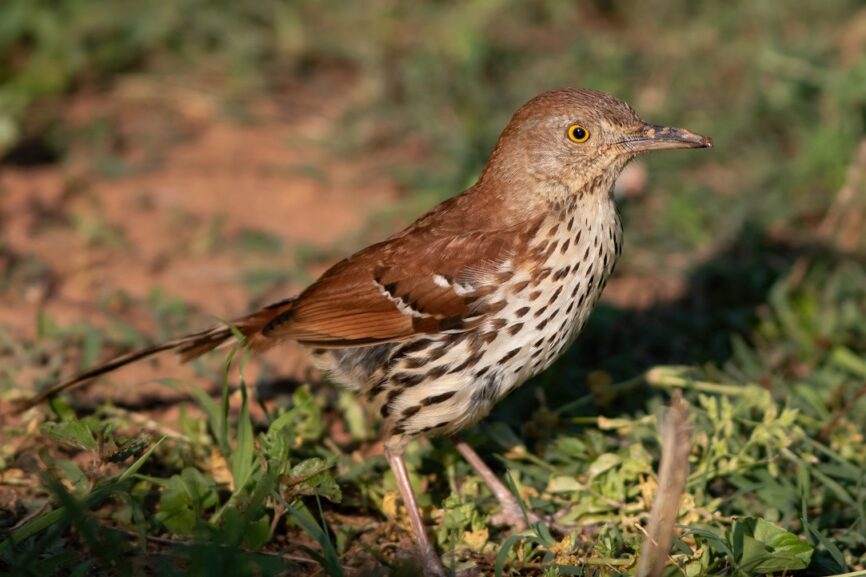
A noisy raucous bird, Brown Thrashers are more heard than seen. Related to mockingbirds and catbirds, like its cousins, brown thrashers will mimic the sound of other birds, although not quite as extensively.
In springtime, when a male is looking for a mate, the suitor will perch on top of a tree, post, or some exposed place and let loose with a series of warbling notes that are distinctive and pervasive. Other than that, they don’t come out in the open all that much, preferring dense underbrush where its coloration makes it hard to spot.
Carolina Chickadee
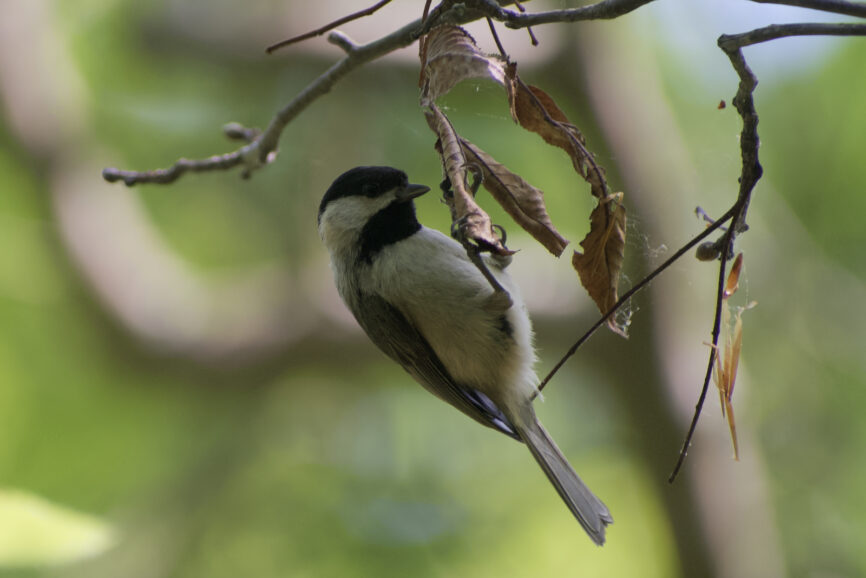
One of the most common songbirds found on the Outer Banks, Carolina Chickadees, can be hard to see as they flit among the branches of trees, but they are there. Also, look for them in rushes and tall grasses along the banks of wetlands.
They can be fun to watch. Somewhat athletic, a lot of times they’ll hang upside down on a branch to feed. Listen for a very pleasant chirrup of a sound. The sound is similar to other birds, especially yellow-rumped warblers that are here in the fall and winter.
They should be common in all of the maritime forests of the Outer Banks, although for some inexplicable reason, they are rarely seen in Buxton Woods on Hatteras Island.
Eastern Meadowlark
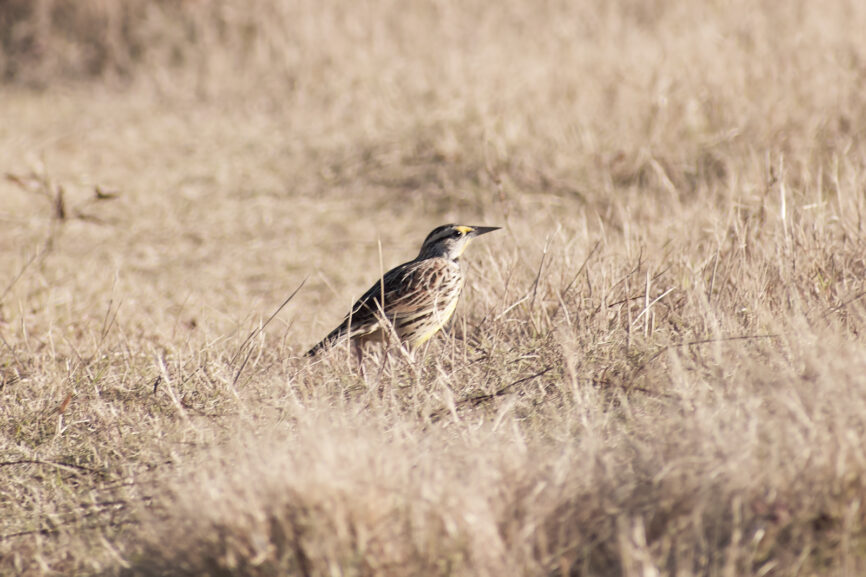
With its surprisingly vivid yellow chest, the Eastern Meadowlark is distinctive as it hops along the ground searching for its favorite food of grasshoppers, crickets, and other insects. They’ll also eat grasses and seeds.
As songbirds go, they are one of the most melodic, their sound a cheerful multi-toned whistle.
Meadowlarks are field birds, meaning they live and feed among grasses in open areas. Occasionally a male will perch on a post or tree branch and sing out for a mate, but that’s one of the few times it can be found away from the ground.
The best place to see them on the Outer Banks is Pea Island National Wildlife Refuge on Hatteras Island.
Northern Mockingbird
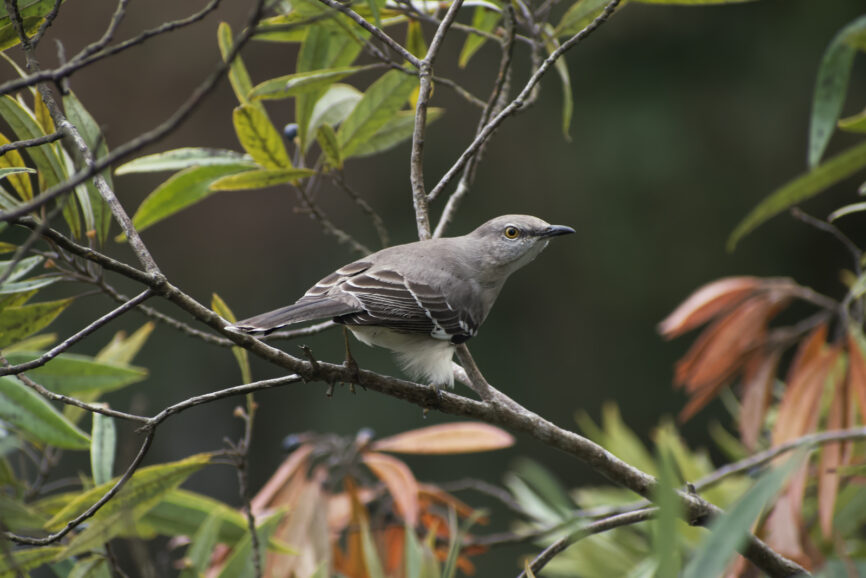
One of the most commonly seen birds of the Outer Banks, with the ability to mimic up to 200 different bird sounds, the Northern Mockingbird is aptly named. Interestingly, research has shown that mockingbirds keep learning and mimicking new sounds throughout their lives. Males looking for a mate seem to sing more than others, but all of them can carry a tune. A number of sources confirm that the female song is softer and a little quieter.
There is no one good place to see mockingbirds because they are everywhere. Fence posts, trees, power lines, even hopping along the ground occasionally, although that is not as common as being perched somewhere.
The Gray Catbird, also very much a part of local birdlife, is a cousin of mockingbirds and is quite similar in appearance. There are a couple of differences that set them apart, although it’s not always easy to see.
Catbirds are a little smaller and overall darker in appearance, with a dark gray to black patch on the top of their head. Mockingbirds have more white in their feathers which is most apparent when they’re in flight.
Tufted Titmouse

Cute probably isn’t a scientific way to describe a bird, but, well, the Tufted Titmouse is cute. A small, fast-moving bird, the titmouse is usually hanging out in the branches of a tree.
In dense foliage, their coloration makes them very difficult to spot, so it may take some patience to see one.
About the same size as a Carolina Chickadee, the peaked (tufted) crown at the top of their head is the dead giveaway it’s a tufted titmouse.
Nags Head Woods and north are the best places to see these guys. For some reason, they aren’t seen very often at all in Buxton Woods.
A couple of final thoughts
Take a camera. Cell phones do take some good pictures, but getting a good shot of a bird usually requires zooming in on them. Cell phone cameras don’t do that all that well.
Mid-spring to mid-autumn—apply lots of insect repellent.
Have fun.





